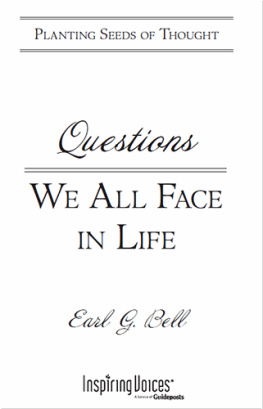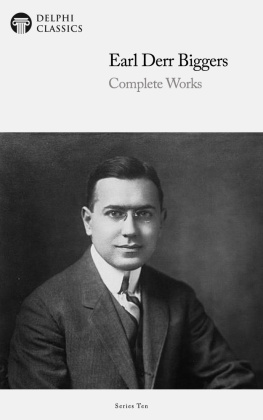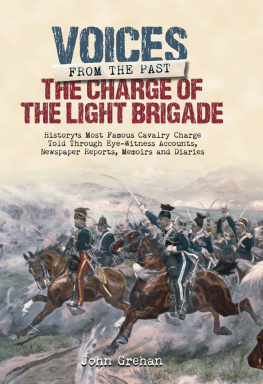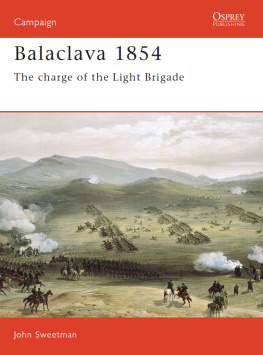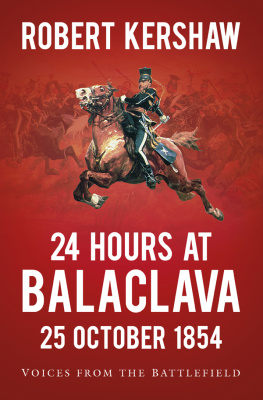TheHomicidalEarl
The Life of Lord Cardigan
Saul David
Little, Brown and Company
First published in Great Britain by Little, Brown and Company 1997
A CIP catalogue record for this book is available from the British Library.
ISBN 0 316 64165 0
Little, Brown and Company (UK) Brettenham House Lancaster Place London WC2E 7EN
To Juliet
Contents
Acknowledgements
Maps
Prologue |
| A Chequered History |
| Early Promise |
| Mrs Johnstone |
| The Arch-Conservative |
| Court-Martial |
| A Change of Fortune |
| The Black Bottle Affair |
| Intent to Murder |
| Plague-spot of the Army |
| Criminal Conversation |
| The Sick Man of Europe |
| Off to War |
| Crimea |
| Charge! |
| See! The Conquering Hero Comes! |
| Was Lord Cardigan a Hero? |
| One Last Scandal |
Acknowledgements
First and foremost, I must thank Mr Edmund Brudenell and the Honourable Mrs Marian Brudenell of Deene Park for their kind hospitality and permission both to reproduce family paintings and to quote from the family papers in the Northampton Record Office. Without their cooperation, this book could not have been written.
I would also like to thank Her Majesty Queen Elizabeth II for permission to quote from the Royal Archives; the Trustees of the National Library of Scotland for permission to quote from the Brown Papers; the Trustees of the British Library for permission to quote from the Peel Papers; the Trustees of the National Army Museum for permission to quote from the Blunt, Forrest, Harrowby and Raglan Papers; and Wiltshire Record Office for permission to quote from the Ailesbury Papers.
During the course of my research I wrote to and visited many institutions. The following individuals were particularly helpful and I am grateful; Lady de Bellaigue, Registrar of the Royal Archives; Dr Peter Boyden, Head of the Department of Archives, Photographs, Film and Sound at the National Army Museum; Judith Curthoys, Assistant Archivist, Christ Church, Oxford; Alasdair Hawkyard, Archivist, and Mr P.D. Hunter, Librarian, at Harrow School; Mrs J.M. Johnston, Archivist, Wiltshire Record Office; Julian Russell, Research Assistant at the National Library of Scotland; Colonel Robin Merton, Regimental Secretary of the Kings Royal Hussars; Rachel Watson, County Archivist, Northamptonshire Record Office; Dr C.M. Woolgar, Archivist and Head of Special Collections, University of Southampton.
I must also acknowledge the help given to me by the Marquess of Anglesey, Viscount Colville, and the staffs of the British Library, the Cardiff Central Library and Monmouth Library.
Finally, I would like to thank three people who have been behind this project (almost!) every step of the way. Julian Alexander, my literary agent, for convincing me that it would sell; Richard Beswick, my editor at Little, Brown, for proving Julian right and for much useful advice besides; Louise, my wife, for indulging my choice of a somewhat precarious career.




Prologue
The morning of 25 October 1854 did not begin well for the 7th Earl of Cardigan. Asleep aboard his yacht in the harbour of Balaclava, he missed the opening of the Russian dawn assault on the outer defences of the port. When he did arrive to take command of his Light Brigade of cavalry, it was watching helplessly as a huge force of Russian infantry gradually overwhelmed the four Turkish-held redoubts armed with British naval guns on the Causeway Heights to the north of the town.
By 7.30 a.m., after a fierce struggle, the strongest redoubt had fallen, and the remaining three soon capitulated, their inadequate garrisons fleeing in disorder. Forced by this reverse to withdraw out of artillery range to the west, the men of the Light Brigade were again frustrated onlookers when a Thin Red Line of Highlanders and a glorious uphill charge by the Heavy Brigade successively repulsed an attempt by a horde of Russian cavalry to cross the valley south of the Heights and pierce Balaclavas inner defences. There had been an opportunity to share the Heavy Brigades glory by charging the Russian cavalry in the flank, as one of the Light Brigades most experienced officers had urged, but Cardigan had chosen to interpret his orders to mean to stand fast unless directly attacked, and he did nothing.
Lord Raglan, the British commander, perched high above the battlefield on the Sapoune Ridge to the west, then tried to press home his temporary advantage by ordering the cavalry, supported by infantry reinforcements, to advance and take any opportunity to recover the Heights. But the infantry had not yet appeared in sufficient strength and Lord Lucan, the cavalry commander, was unwilling to move his horsemen against prepared enemy positions until they had done so. Instead he sent Cardigans brigade to the head of the valley north of the Heights, to enable them to execute one arm of a pincer attack when the infantry did arrive.
With Cardigan and his men languishing inactive in the plain below, anxious for an opportunity to prove their worth, Lord Raglan became increasingly impatient. More than thirty minutes had ticked by when a member of his staff shouted: By Jove, theyre going to take away the guns! Through field-glasses, the Russians could be seen bringing forward horses with lasso tackle to remove the captured naval 12-pounders. The great Duke of Wellington had reputedly never lost an artillery piece, and Raglan, his devoted lieutenant, was anxious to retain the same proud record. Turning to Airey, his Quartermaster-General, he dictated an urgent order to Lucan:
Lord Raglan wishes the cavalry to advance rapidly to the front follow the enemy and try to prevent the enemy carrying away the guns Troop Horse Artillery may accompany French cavalry is on your left. Immediate.
Captain Nolan, Aireys aide-de-camp and the best horseman on the staff, was detailed to carry the pencil-written order. It was an unfortunate choice given that Nolan had been loud in his criticism of the performance of Lucan and Cardigan thus far in the campaign. Tell Lord Lucan the cavalry is to attack immediately, Raglan called after him, as Nolan spurred down the precipitous slope.
Within five minutes he had located the cavalry commander mounted with his staff between the two brigades and handed him the order, which Lucan carefully read with growing alarm. Now he was being asked to advance to recover the guns without even infantry support. It was madness. Hesitating, he impressed upon Nolan the uselessness and dangers of such an attack.
Lord Raglans orders are that the cavalry should attack immediately, Nolan retorted.
Next page




